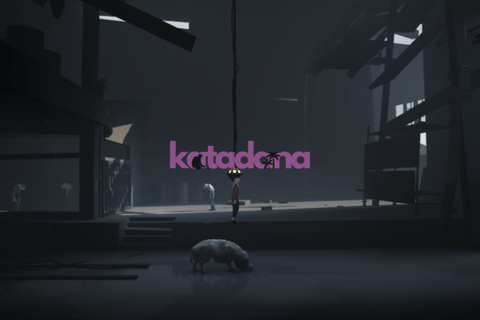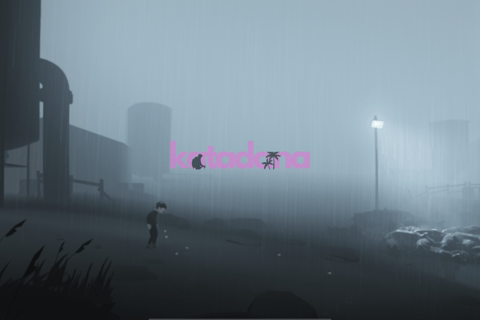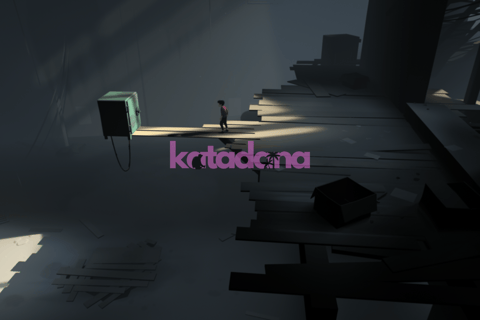INSIDE Game Review: The Mind-Blowing Truth About Control You Never Noticed
Developed by the Danish studio Playdead, INSIDE pushes the boundaries of storytelling and artistic design in video games.
OTHERS


If you love atmospheric indie games that make you think, INSIDE by Playdead is an absolute must-play. Developed by the Danish studio Playdead, known for their critically acclaimed game LIMBO, INSIDE pushes the boundaries of storytelling and artistic design in video games. Released in 2016, it quickly gained widespread recognition for its eerie atmosphere, immersive gameplay, and unsettling narrative.
The game received numerous awards, including the BAFTA Games Award for Best Game Design and Best Artistic Achievement, solidifying its place as one of the most thought-provoking indie games of the decade. This puzzle-platformer isn’t just a game—it’s an experience. With its hauntingly beautiful visuals, subtle storytelling, and deep themes of control, INSIDE will leave you both mesmerized and unsettled.
Read More: Echoes of Vietnam: An Odyssey Through Ho Chi Minh, Ninh Binh, and Hanoi
A Visual Masterpiece: Darkness Has Never Looked This Good
The first thing that grabs you about INSIDE is its breathtaking art style. It embraces a muted color palette with shades of grey, red, and black, creating a chilling yet strangely beautiful world. The use of lighting and shadows is masterful, guiding your eyes while amplifying the game’s eerie atmosphere. Every frame could be a work of art, making it a true “eyegasm” for those who appreciate minimalist but powerful aesthetics.


But it’s not just the world that’s haunting—the characters themselves leave a lasting impression. The faceless boy you control is a symbol of anonymity, a pawn in a larger experiment, making his journey all the more unsettling. Along the way, you’ll encounter bizarre and unforgettable entities, like the eerie long-haired mermaid that relentlessly pursues you in the water.
Among all the characters, the mermaid is often cited as a fan favorite due to her terrifying presence and the mystery surrounding her existence. Some theories suggest she could be a failed experiment or a representation of something far darker. Every creature, every enemy, and every background character plays a role in deepening the game’s disturbing mystery, making INSIDE not just a visual spectacle, but an emotional and psychological one as well.
Gameplay: Simple Yet Deeply Engaging


At its core, INSIDE follows a simple side-scrolling mechanic, but don’t let that fool you. The puzzles are brilliantly designed, often requiring clever environmental interaction. You might find yourself dragging boxes to reach higher platforms, manipulating switches to open doors, or even using a mysterious mind-control helmet to take over lifeless bodies and solve puzzles in eerie, unexpected ways.
The game never gives you direct instructions, encouraging players to experiment and observe their surroundings. Every challenge feels organic, seamlessly blending into the dark world, making you feel like you're not just playing a game—but desperately surviving within it.
The Silent Storytelling: A Narrative Without Words


Much like its predecessor LIMBO, INSIDE tells its story without a single line of dialogue. Instead, everything is conveyed through the environment, character movement, and eerie set pieces. From the very start, you take control of a faceless boy who is relentlessly pursued through a bleak and oppressive world. There’s no explanation of who he is or why he’s running, but the tension is palpable as masked figures, guard dogs, and searchlights relentlessly hunt him down.
As the boy pushes forward, the world around him grows increasingly disturbing. He sneaks through fields littered with lifeless bodies, infiltrates dystopian facilities where people are forced into mindless conformity, and plunges into the depths of murky waters, where something sinister lurks. The deeper he goes, the more he stumbles upon chilling experiments—mindless test subjects, grotesque biological fusions, and towering machinery with a purpose that is never fully revealed.
One of the most haunting moments in the game is when the boy acquires a strange mind-control helmet. With it, he can manipulate lifeless husks, bending them to his will to solve puzzles and navigate the treacherous environment. But as you control these drones, a terrifying thought creeps in—who is really in control? Is the boy truly free, or just another subject in a grander experiment?


With no dialogue or text to guide you, the game forces players to piece together its chilling narrative through its environment and visual storytelling. Every moment feels like a clue, and every step forward is one step deeper into an unsettling truth that lingers long after the game ends.
As the boy journeys forward, he finds himself navigating through dark forests, abandoned farmlands, and high-tech laboratories, each area revealing more about the mysterious world he inhabits. The deeper he goes, the more he encounters horrifying experiments—mind-controlled test subjects, grotesque biological fusions, and towering machinery designed for purposes unknown. One of the most chilling moments in the game is when he acquires a mind-control helmet, allowing him to manipulate lifeless bodies to solve puzzles, blurring the line between autonomy and submission.
The game cleverly uses environmental storytelling to hint at a greater conspiracy. Who built this facility? Why are people being controlled? And more importantly, is the boy just another experiment trying to escape? The answers are left to interpretation, making INSIDE an unsettling yet deeply compelling narrative experience.
The Theme of Control: Who Is Really in Charge?


One of the most thought-provoking aspects of INSIDE is its exploration of control. From the very start, the boy is being controlled—by you, the player. But as the game progresses, it becomes clear that control runs much deeper than just a gameplay mechanic.
The game challenges players to question autonomy, both within the game and in the real world. Are we truly making our own decisions, or are we merely following the rules set before us? When the boy wears the mind-control helmet and forces lifeless bodies to move, it creates an eerie parallel—just as you control him, something might be controlling you. The deeper you go, the more you realize that control isn’t just a theme—it’s the very foundation of INSIDE’s chilling world.
And perhaps, by the end, you’ll wonder: was the boy ever free to begin with? The game subtly makes the player question their own role in this dark world, reinforcing the idea that not all choices are truly our own.
Final Verdict: A Must-Play Experience
With its gorgeous yet grim aesthetics, gripping atmosphere, and deep, thought-provoking themes, INSIDE is more than just a game—it’s a piece of interactive art. It’s short but unforgettable, leaving players with lingering thoughts long after the credits roll.
If you haven’t played it yet, you’re missing out on one of the most unique gaming experiences of the past decade. If you're ready for a psychological rollercoaster disguised as a video game, INSIDE on iOS is worth every cent of its $6.99 price tag.
Available on: iOS, PS4, Nintendo Switch, XBOX ONE, Humble Store, EPIC Games, gog.com

Buy Me a Coffee!
Every coffee you buy helps me craft more inspiring stories, capture unforgettable moments, and share them with you.
